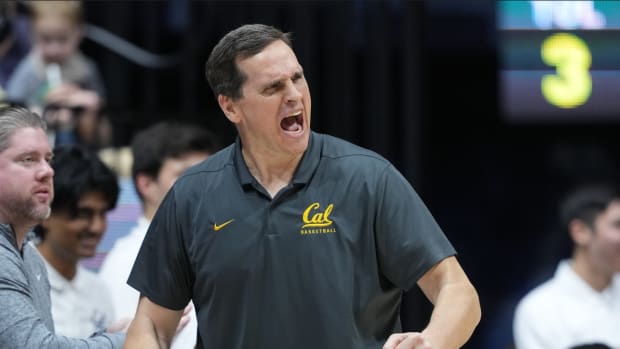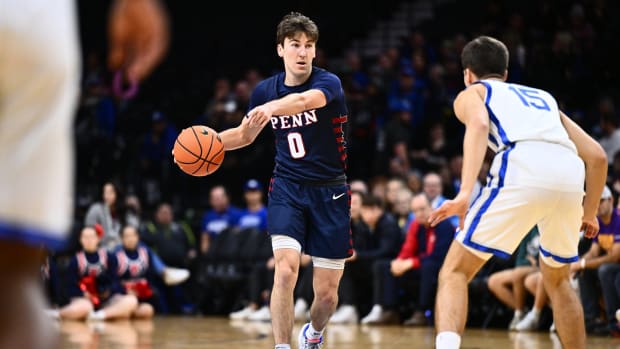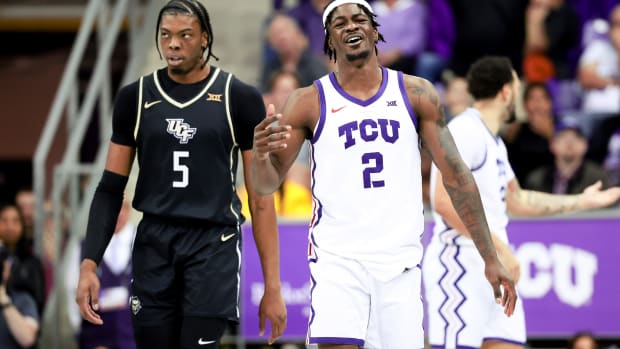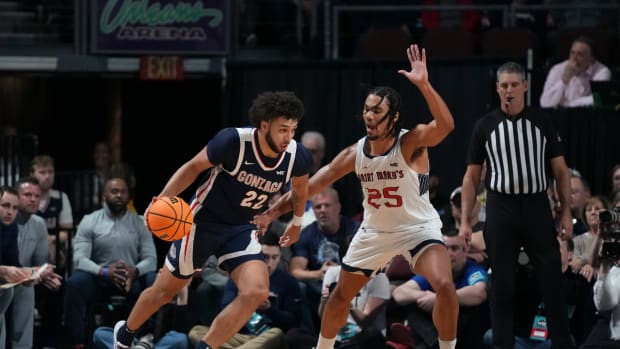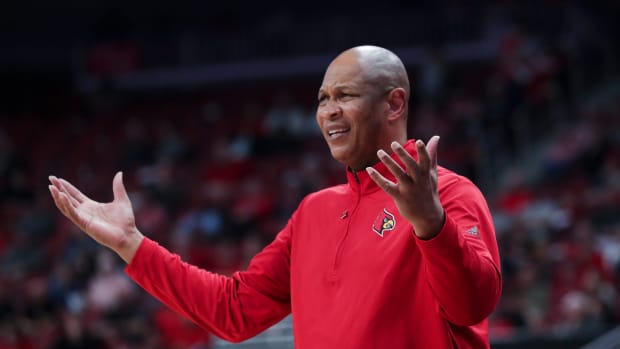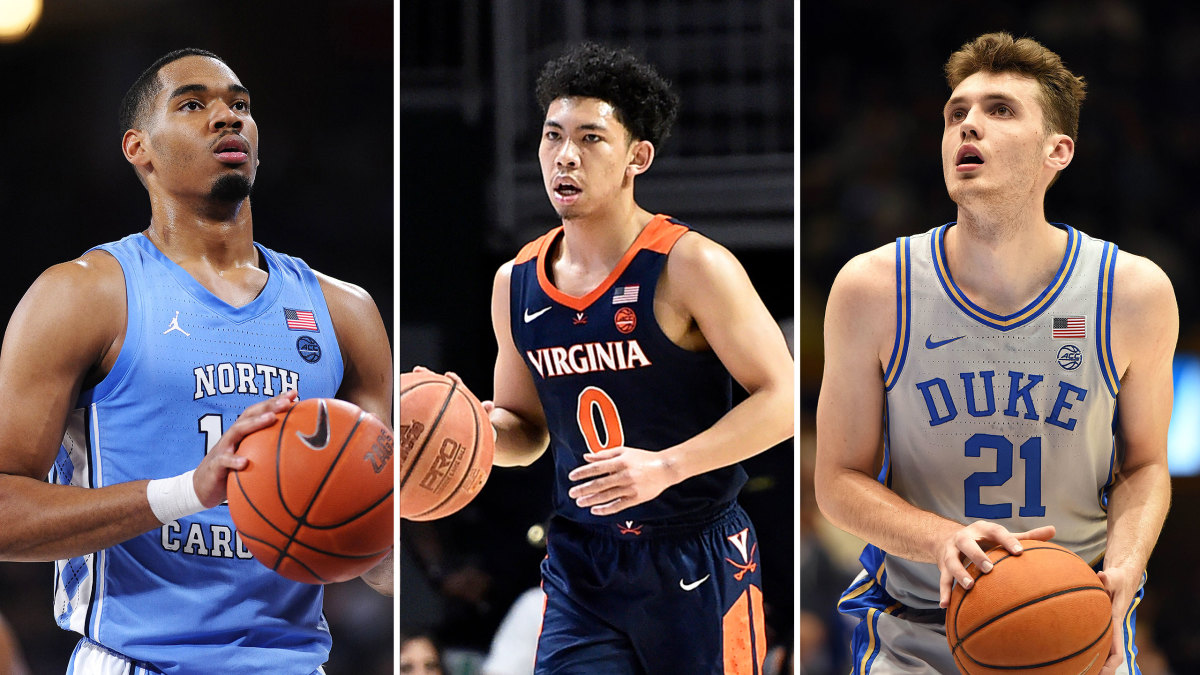
ACC Basketball Preview: Changeover Paves Way for a Deeper Conference in 2020-21
As part of Sports Illustrated's preview of the 2020–21 men's college basketball season, we're breaking down each of the six major conferences. We started with the Big 12, and the Big East, Big Ten, Pac-12 and SEC are still to follow. All will be complete with our analyst's breakdown of each team and a projected order of finish.
The Big Picture
The ACC picture looks a bit different. Duke is not an AP preseason top-five selection for the first time since 2012. North Carolina is not in the AP preseason top 15 for the first time since 2005. The Blue Devils did not reload with quite as much freshman firepower as usual, and the Tar Heels are rebounding from a 14–19 debacle. The buzz around the sport centers on Spokane, Waco and Philadelphia, and the ACC buzz does not center on Tobacco Road. Reliable Virginia leads what should be a deeper ACC than it was last season. “The league may be as balanced top to bottom as I’ve seen since I’ve been here,” said Georgia Tech coach Josh Pastner, now in his fifth season in the ACC. “One through 15, I don’t know how much separation there is.” This doesn’t look like a league that will produce multiple NCAA tournament No. 1 seeds, but it may produce at least seven NCAA tourney teams.
Conference Player of the Year: Garrison Brooks, UNC
Overlooked amid the Tar Heels’ lost season, Brooks was terrific—and then he came back to school for his senior year. The 6' 9", 235-pounder’s final six games last year were Hansbrough-esque, averaging more than 24 points and 10 free throws per game. Roy Williams loves to have someone who can operate inside, and Brooks is that guy. Even with three five-star freshmen coming in, the UNC offense is going to run through Brooks. Tyler Hansbrough was a 20-and-10 guy in 2007–08, and Brooks could be the season.
Newcomer of the Year: Sam Hauser, Virginia
There are plenty of five-star freshmen entering the ACC, but nobody imported a more proven and readily applicable talent than the sharp-shooting Marquette transfer. Hauser averaged 14.9 points and 7.2 rebounds for the Golden Eagles in 2018–19; a guy who has made 246 career three-pointers will step in to fill an immediate shooting need for the Cavaliers. His year sitting out should have given Tony Bennett ample time to rinse the Marquette defense out of Hauser and implement his own intense focus on that end of the floor.
Dark-Horse Team to Win the Conference: Florida State
The dark horse is the defending champion. The Seminoles lost a lot, including a couple of players who figure to be high NBA draft picks later this month, but they didn’t lose everything from a team that went 26–5, 16–4 in the league. Three starters return, a five-star freshman steps in to run the point, and for the 14th straight season Leonard Hamilton has at least one 7-footer on the roster (actually two, plus a guy listed at 6' 11"). Expect FSU to be what it always is: long, athletic and fierce.
First Team All-Conference
Garrison Brooks, North Carolina
Sam Hauser, Virginia
Matthew Hurt, Duke
M.J. Walker, Florida State
Michael Devoe, Georgia Tech
Predicted Order of Finish
1. Virginia
The Cavaliers never got a chance to defend their 2019 NCAA title. But they were rolling at the end of last year, on an eight-game winning streak, and would have been a hard out. This year’s team should be better offensively, with the arrival of Hauser and an expected step forward from sophomore guard Casey Morsell, while remaining a nightmare to score against. Kihei Clark will again run the team with patience, precision and tenacity. Tony Bennett has the pieces.
Can a team really go from tied for last in the ACC to second in one season? If anyone can, it’s the Tar Heels. Last year was an injury-plagued mess with a patchwork roster, as Roy Williams tried to win with a pair of overmatched grad transfers from mid-major programs in key roles. This season he has Brooks returning and a dynamite freshman class, with guards Caleb Love and R.J. Davis ready to take on major roles in the backcourt. Carolina should have quality frontcourt depth as well.
3. Florida State
Leonard Hamilton isn’t the kind of coach who relishes the idea of putting the ball in the hands of a freshman point guard—but Scottie Barnes isn’t an ordinary freshman point guard. He’s a 6' 9" five-star recruit and he will be counted on immediately. Barnes will have a veteran cast around him with three returning starters, and keep an eye on sophomore 7-footer Balsa Koprivica (of federal investigation fame). He was off to a promising start last season before a back injury derailed his season.
4. Duke
The Blue Devils don’t have a Zion Williamson, a Marvin Bagley III or a Vernon Carey on this year’s roster. But they do have four five-star freshmen to go along with talented sophomores Matthew Hurt and Wendell Moore. From the tall (Mark Williams and Jalen Johnson) to the small (D.J. Steward and Jeremy Roach), Mike Krzyzewski’s freshman class again will be among the very best in the nation. One X-factor to watch with Duke: With no fans at Cameron Indoor Stadium, will that diminish the Blue Devils’ famed homecourt advantage? “That’s like a 14-point advantage they don’t have,” said one ACC coach.
5. Georgia Tech
To the surprise of many, the Yellow Jackets rose up to finish fifth in the ACC last year at 11–9, and 17–14 overall. Part of that was a fortuitous league schedule, but that also was a sign of a program on the rise. Tech returns what might be the best backcourt in the conference in Michael Devoe and Jose Alvarado (a combined 30.4 points, 7.3 rebounds, 7.4 assists and 3.4 steals per game last year). Among programs that don’t recruit at the Duke–North Carolina level, the goal is to get old and stay old. Georgia Tech is accomplishing that.
6. Syracuse
The Orange will be Team Pull It, with Joe Girard and coach’s son Buddy Boeheim launching at will from three-point range. ’Cuse returns two other starters in big men Marek Dolezaj and Bourama Sidibe, who provide rebounding and rim protection. The question is whether they will be sufficiently improved on defense. Syracuse’s trademark 2–3 zone wasn’t up to the usual standards last year, especially in conference play. With seven incoming freshmen, Boeheim will have to coach them up quickly to play his preferred style.
7. Miami
The Hurricanes are coming off consecutive losing seasons, but if you think that means Jim Larranaga is done in Coral Gables, watch this team this season. Miami should have the goods to get back to not only winning, but making the NCAA tournament. Chris Lykes, listed at 5' 7", is everyone’s favorite short guy. He has plenty of company in terms of returning experience. The big question will be replacing what was lost when last year’s leading rebounder, Sam Waardenburg, broke his foot in October, taking him out for the season.
8. Louisville
The Cardinals would be a couple of spots higher if they hadn’t been waylaid by injuries this month. Post man Malik Williams, the team captain and most experienced returning player, will miss 12 weeks (and possibly all season) after breaking a bone in his foot for the second time in 14 months. San Francisco grad transfer Charles Minlend is out six weeks with a knee injury. That leaves much of the load to Radford transfer Carlik Jones (a 20-point scorer) and sophomores David Johnson and Samuell Williamson. Johnson is an NBA-level talent who can play a physical point at 6' 5" and 210 pounds. Williamson was a high-level recruit with great offensive ability. Both need to improve their defense, especially since Williams will not be backing them up at the rim.
9. Clemson
Brad Brownell might have his best recruiting class, with a trio of four-star players arriving in guard P.J. Hall, 6' 8" wing Olivier Maxence-Prosper (from the NBA’s Latin American Academy in Mexico City) and big man Lynn Kidd. They join a trio of returning starters in Aamir Simms (13 points, 7.2 rebounds), Al-Amir Dawes (nine points per game) and John Newman III (9.5 points). If the youngsters come along quickly, the Tigers will finish higher than this in the league. As usual, the question with Clemson will be the ability to put the ball in the basket.
10. North Carolina State
Kevin Keatts will play as many guys as he can trust to keep his up-tempo style humming, and that number might be at its highest point since he arrived in Raleigh in 2017. He has three seniors who have played extensively in his system in Devon Daniels, D.J. Funderburk and Braxton Beverly; junior glue guy Jericole Hellems; and sophomore rim protector supreme Manny Bates. Add in Nebraska transfer Thomas Allen, and the Wolfpack might have the defensive pest they desire at point guard. If Allen isn’t the answer at point, there are other (young) options.
11. Notre Dame
The Fighting Irish were improved last year, getting back to winning 20 games after a 14–19 dud in 2018–19, but they haven’t made the NCAA tourney since 2017. To do that, it’s pretty much now or never for Notre Dame’s junior class, which arrived with great fanfare two years ago but hasn’t yet made the desired impact. Guards Prentiss Hubb (12.1 points, 5.1 assists) and Dane Goodwin 10.8 points) are the top players from that class, with Nate Laszewski 7.4 points, 4.6 rebounds) expected to take a step forward. There also are high hopes for Stanford transfer Cormac Ryan and senior big man Juwan Durham. Team defense must improve.
12. Virginia Tech
Mike Young arrived from Wofford last season, inherited a depleted roster and got off to a promising start at 14–5. Then the bottom fell out and the Hokies finished 16–16, and standout freshman guard Landers Nolley transferred to Memphis. Still, there is reason for hope as Young continues to fit pieces into his three-point-centric offense. His top three players in threes made (Jalen Cone, Nahiem Alleyne and Hunter Cattoor) all return. The Hokies add Kansas State grad transfer Cartier Diarra, who was a key contributor for Bruce Weber for three years. Whether Tech has enough (or any) quality size to compete in this league remains to be seen.
13. Pittsburgh
Is there light at the end of the tunnel that was dug by the hire of Kevin Stallings in 2016? Maybe. Jeff Capel’s first two teams were certainly better than Stallings’s last one, but that doesn’t get you very far. In fact, last season, it got Pitt a tie for last in the league at 6–14. The rebuilding Panthers return some important players in Xavier Johnson (11.7 points, 4.9 assists), Justin Champagnie (12.7 points, 7.0 rebounds) and Au’Diese Toney (9.5 points, 4.8 rebounds), but won’t have high-impact transfer Nike Sibande, who scored more than 1,400 points in three seasons at Miami (Ohio). His request for immediate eligibility was denied.
14. Boston College
Jim Christian got what could have been a pandemic reprieve to keep his job another year. This will be Year 7, and his best ACC record to date is 7–11. The best news is that guard Wynston Tabbs, who averaged 13.9 points per game as a freshman in 2018–19, should be ready to go after missing all last season due to injury. He joins Providence transfer Makai Ashton-Langford in what should be a pretty good backcourt. The most important frontcourt holdover is Steffon Mitchell, who could make a run at being a double-double guy.
15. Wake Forest
Steve Forbes arrives after a great run at East Tennessee State, but this is going to take a while. Danny Manning didn’t leave him much, and that was before his best player (7-footer Olivier Sarr) transferred to Kentucky. Forbes is already starting to stock the roster for 2021–22, but for this season he will likely make his biggest impact upgrading the tenacity and competitiveness of the Demon Deacons.
More ACC Hoops Coverage From SI.com:
Which Duke Freshman Reminds Wendell Moore of Zion?
UNC Basketball Schedule for 2020-21 Revealed
Breaking Down Louisville's Men's Basketball Schedule

